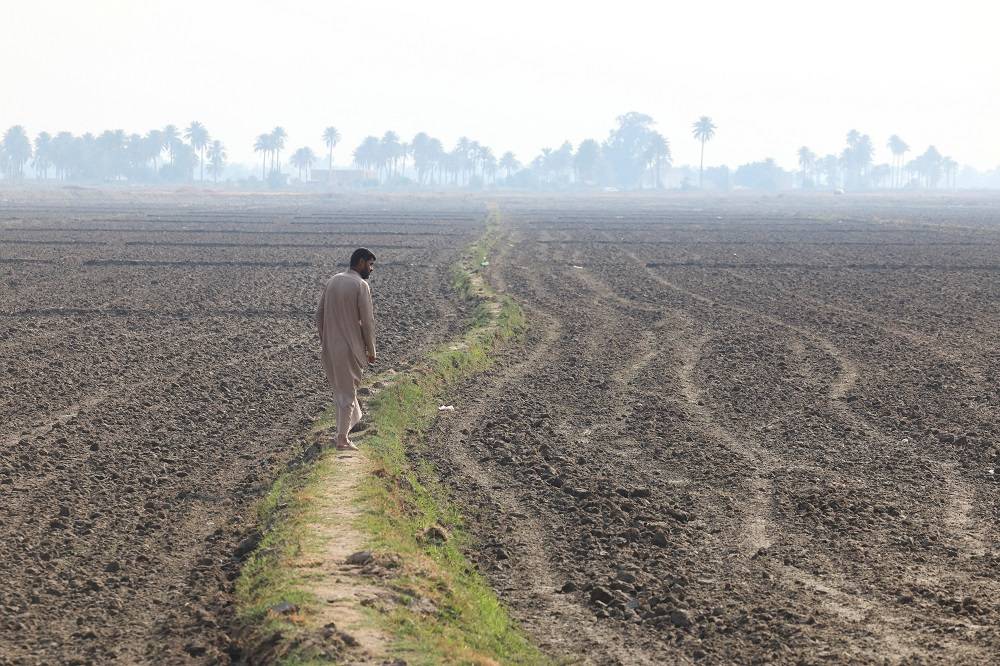It can be said that American racism has adopted a specific approach towards non-whites and immigrants. It also produced extremist racist groups, most notably those with Nazi leanings. The presidency of Donald Trump came to open the door wide to the “America first” policy that many inside and outside the United States said was reminiscent of “Deutschland uber alles” (Germany above all else). Given this simplified backdrop, can someone understand the dimensions of what took place recently in the city if Charlottesville, Virginia?
The date Saturday, August 12. The location, a public garden in Charlottesville that houses the statue of Confederate General Robert Lee, one of the most prominent advocates of the separation of the southern US from the Union during the country’s civil war nearly two centuries ago.
Some residents of the city decided that it was time to remove the statue given that it is a reminder of a painful historic period in US history, that of slavery. The residents believed that keeping the statue is an insult to free America, where all people are equal under law, whether they are black or white, born on its land or naturalized. It appears that not everyone shares this belief.
Coming from such far-flung states such as Ohio, Michigan and Wisconsin and armed with authorized weapons, right-wing racist groups descended on Charlottesville, chanting their traditional anti-black and anti-semitic, xenophobic and anti-immigrant slogans. The real clash then erupted when a vehicle ran over some protesters to transform the campus of the historic University of Virginia, which was established by one of the most important US presidents, Thomas Jefferson, into a war zone. The scene was painted with the images of racial intolerance and hatred and a return of right-wing extremist groups, such as the American Nazi Party, Ku Klux Klan, White Aryan Resistance, National Alliance and many others.
This racist American scene raises a major question: Is there an institutional methodology working in the country that is working against African Americans?
In his exciting book, “Racism: A Very Short Introduction,” Ali Rattansi, a visiting social science professor at City University in London, speaks of the screaming racism inside the US and the forms of inequality in the country. He gave the example of how in 2001, the actual average income of black families was 62 percent of that of white people. The figure dropped to 58 percent when Latinos were excluded.
According to official figures, compared to white children, there are three times more African American children who are raised in poverty. There are two times as many unemployed African Americans as white people, a figure that has remain fixed for a long time. African Americans remain the most residentially segregated members of society, which can be attributed to white Americans’ refusal to live in an area where African Americans make up more than 20 percent of the population. The differences in infant mortality rates is a clear indication of the health of the population. Infant mortality rates among African Americans is double that of their white counterparts. In addition, some 75 percent of African Americans have completed their high school diploma, but only 14 percent pursued a university degree.
Given the above, is what took place in Charlottesville a strange occurrence?
Where did the rioters on the August 12 day come from? Not many people are aware of the existence of the American Nazi Party that was established in Arlington, Virginia in 1958. It was founded by George Rockwell, who had dreams to rule the US in the 1970s, but his assassination by a party defector put an end to that plan. His ideas stemmed from the Hilter’s Nazi ideals and his plan, had he been elected as US president, called for eliminating the Jews the same way Hitler did. He also wanted to deport African Americans and rewrite the constitution with a Nazi base.
The Ku Klux Klan meanwhile was and still is one of the most violent of racist movements in the US. It has a history of violence, burning houses and properties and kidnapping of African Americans and foreigners.
Established in 1974 by physics professor William Luther Pierce, the National Alliance is considered the most dangerous neo-Nazi movement in the US. Its ranks are filled with murderers, bombers and bank robbers. It’s suffice to point out that Timothy McVeigh, the bomber of the Federal Building in Oklahoma in 1995, was a member of this Nazi group.
The US scene is not limited to traditional Nazi or far-right extremist groups. Agence France Presse reported on how a new generation of right-wing extremists has started to find its ground in the country. Why and how?
The answer leads on two paths. The first is financial and the second is intellectual. The first path is linked to the economic and financial situation in the country and the second is connected to the political state over the past decade, the last two years, specifically.
Addressing the financial path, the protesters who rioted in Charlottesville mainly came from the central United States, which is popularly known as the Rust Belt due it is economic decline.
This takes us to Howard Zinn’s “A People’s History of the United States” and chapter 23 entitled, “The Coming Revolt of the Guards.” The guards here are the American people, who have started to grow restless and angry towards the oligarchy in the country that is unjustly controlling its wealth.
Zinn noted that one percent of the US population holds a third of the country’s wealth. The remaining 97 percent is distributed in a way that keeps the people in a constant state of conflict, such as between small homeowners and non-homeowners, blacks against whites, natives and immigrants. Zinn warned Americans, especially their leaders, that what took place in the 1920s when the Klan managed to recruit millions of followers, could be repeated again as long as millions of American still aspire for solutions to the major problems that are plaguing their country’s economy and society.
These challenges make the people feel helpless and discouraged, leading to their isolation from others, their world, jobs and themselves. This pushes them to embrace the extremist right-wing culture.
The second path that explains the rise of American nationalism is greatly linked to the election of Trump as president. His electoral campaign slogans were enough to awaken the racist beast.
This awakening had its original roots during Barack Obama’s term in office, as pointed out by France’s La Croix newspaper in a recent report. It said that Trump’s victory was a response to Obama’s election and a rejection of another African American coming to power.
During his campaign, Trump resorted to many visuals and demonstrations that the Nazis used to stir German nationalism. He indeed succeeded in garnering the votes of the far right, who in turn highlighted the demographic economic decline of the white man against the African Americans, Latinos and immigrants.
No one can deny that Trump promoted the ideals of the anti-immigrant “Alt-Right”. The danger lies in the fact that on the surface, he presented an alternative culture to that advocated by traditional racist groups, but in reality they are more dangerous and alarming. It is likely that this Alt-Right movement will spread.
An observer of US developments cannot make official or direct accusations against Trump and label him a sponsor of the new form of racism in the US. Implicitly, however, one can simply look at his time in office and his close circle and see he is leading the country on the path of racism and intolerance. Some fear that violence and eventual sectarian and racial unrest will eventually lead to civil war.
Take for example some of the figures who were part of his electoral campaign and who are still with him:
David Duke is an extreme nationalist white supremacist and former leader of the Ku Klux Klan. He had voiced his support for Trump during his electoral campaign and once said: “I’m overjoyed to see Trump and most Americans embrace most of the issues that I’ve championed for years…. My motto will remain ‘America First’.”
Duke still acts as a sort of spiritual leader of the Klan, which is witnessing a rapid rise in its members, especially since the group is playing on unemployment to stir up racist sentiment. Many whites are not finding job opportunities and believe that immigrants and African Americans are taking these opportunities.
The other figure is Richard Bertrand Spencer, president of the National Policy Institute, a white supremacist think tank that believes in the establishment of a racial state that excludes minorities. In an extensive reading of the Washington Report website, we can see a clear link between the 38-year-old Spencer and the Alt-Right that works on uniting white supremacists throughout the country.
In celebration of Trump’s victory, the Washington Post reported Spencer as saying: “Let us celebrate like 1939, a date that the audience knows is when Adolf Hitler was elected chancellor of Germany and Nazis began to create their racial state.”










